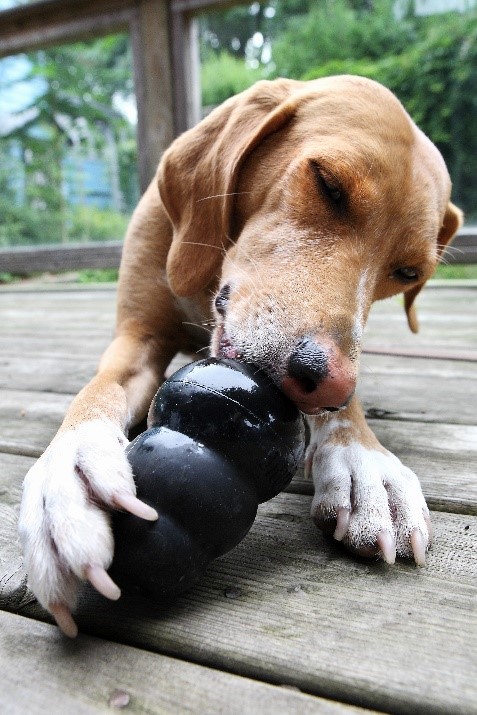Many of us have been forced from the work office into makeshift home-work spaces. Dining room tables are now makeshift desks, couches are now for conference meetings and our only co-workers are our pets.
Many of our pets are enjoying the luxuries of having their humans home all the time. They’re enjoying more exercise and attention than ever before. Long hours lounging with Mom and/or Dad while they work is the new normal for them. But wait, what happens when mom and dad head back to the office?

While we may seamlessly head back in to work for the nine to five shifts, our pets don’t understand that their new “normal” isn’t actually, normal. Many of our pets, even those who have never had an issue before, may begin to exhibit separation anxiety behaviors.
The Facts
Separation anxiety in dogs is a severe panic attack that is brought on by being left alone. According to the American Veterinary Association between 20% to 40% of all dog owners report issues with separation anxiety. The symptoms can range from barking when left alone to urine or feces accidents, destructive behaviors to as severe as jumping through windows. Most of the time your dog will begin to show symptoms before you even leave the house, becoming anxious as you put on your shoes or pick up your coat. The process of “getting ready to leave” can begin the stress process that causes an attack. Separation anxiety is treatable and surmountable, but it takes a tremendous amount of time and dedication to help.
So, how can we avoid throwing our dogs into fits of anxiety as we return to work?

THE PLAN
Your first order of business is to establish a routine. Ideally a routine that can seamlessly take you back into your work schedule. If your dog has never had an issue being left alone in the past you’re already on your way.
Start by determining where your pet is going to stay when you’re gone. If your dog is not experienced having free roam of the house, it is not advisable to allow it until they’ve been properly trained. You can confine your dog several ways: crating, in a spare bedroom, behind a baby gate or using an exercise pen. Start the training process by asking your dog to enter this space, offer them a treat and then let them out. Your goal is to show them that great things happen there and by remaining nearby there is no reason for them to begin stressing. Repeat this until they easily enter the space for you.
Once you’ve set up your area of confinement, it’s time to start leaving. At the start, only leave for short periods of time, leave for 10-15 minutes and return. As your dog becomes comfortable with these time periods you can begin increasing your time away. Leaving a minimum of three times a week for at least an hour is ideal. Always make entering the space a pleasant experience for your dog and never as a punishment.
Make it Count
One of the keys to success with integrating your dog to their confinement space is, high value enrichment items. Enrichment items are things that take your dog time and brainpower to consume. Filled Kong’s (see below), filled marrow bones, puzzle toys, puzzle bowls, Licki mats and long-lasting chews are a few options that are a tasty snack while also taking time and focus for your dog to complete. You can prepare these items ahead of time so that when you get them out it’s the beginning of your routine of putting your dog away!

We never hope to have issues with our dogs when we leave but it’s an unfortunate reality that many dog owners will face and as our time home expands, the likelihood of our dogs experiencing some form of stress is more and more assured. Setting up a plan and seeking out resources for help ahead of schedule is also advisable. Whether it’s starting to work with a dog trainer or joining a network of other dog owners it is a wonderful tool to have someone to experience this with. In the meantime, don’t be afraid to enjoy those extra dog snuggles and get all the “walkies” in while you can!
 That Pet Blog That Pet Place Pet Blog
That Pet Blog That Pet Place Pet Blog
